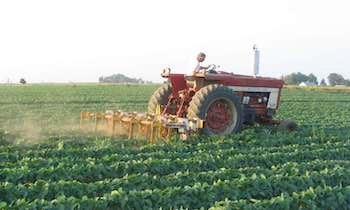
~ Press release issued by the Virginia Farm Bureau Federation
COURTLAND — As fertilizer costs continue to rise, farmers are working hard to plan and budget for the 2022 growing season.
Fertilizer is a necessity for farmers, allowing them to achieve the high yields needed to meet demand and keep their operations afloat. According to the American Farm Bureau Federation, fertilizer costs have risen as much as 300 percent in some areas — adding significant pressure to farmers’ pocketbooks.
“It’s just so outrageously high. It’s pretty unreal,” said Richard Kitchen, a Southampton County farmer and member of Virginia Farm Bureau Federation’s Cotton Advisory Committee.
Kitchen grows cotton, peanuts, corn, soybeans and wheat at Plank Road Farms in Courtland. He said while he isn’t using much fertilizer during the winter, he’ll have to be strategic in the spring.
“It’ll be a lot of sharpening the pencil and deciding what is going to be the best crop mix for the 2022 growing season,” Kitchen said. “Maybe that means not growing as many acres of crops that require a lot of fertilizer.”
AFBF explained that increased global demand; energy costs; increased prices of raw nutrients like nitrogen, phosphorus and potassium; supply chain disruptions; and trade duties are all contributing to sky-high prices.
Kitchen added that many farmers had stellar growing seasons with larger yields in 2021. Combined with higher commodity prices, farmers were in a good position to make extra income — money that could be saved or reinvested back into the farm.
“Unfortunately, a lot of those profits are going to be diminished because you’re already going to be spending this money just to buy fertilizer so we’re able to farm next year,” he lamented. “So where normally we’d be excited, it’s knocking us back a notch.”
In Westmoreland County, Sparky Crossman said high fertilizer prices are just another thing for farmers to contend with, alongside unpredictable weather, pests and other factors that come into play when growing crops.
“When commodity prices go up, fertilizer, seed and everything tend to follow,” he explained. “It goes up quickly and stays there for a while, and it’s a long time coming back until commodity prices start dropping again.”
Crossman owns Laurel Springs Grain Corporation in Mount Holly, where he grows corn and grain on about 500 acres. He noted that corn requires the most nitrogen, and according to AFBF, nitrogen costs have risen over 159 percent compared to September 2020.
He said farmers will have to “tighten their belts.”
Crossman added that he may reduce the amount of fertilizer he uses in 2022. “It probably wouldn’t hurt me for a year or so, but if prices stay up there a long time, it would really hurt everyone … I don’t like it, but what can we do?”
•••
RELATED ARTICLES
Farm Ministry partners with Page Co-Op, Burner’s Beef to provide Page One donation
Madison couple among Virginia young farmers to compete nationally
Poultry processor investing $31.5M to set up first East Coast operation in Winchester



Be the first to comment